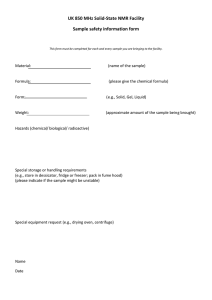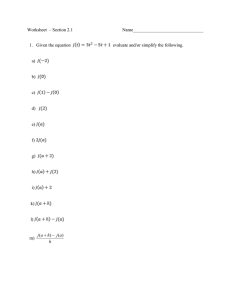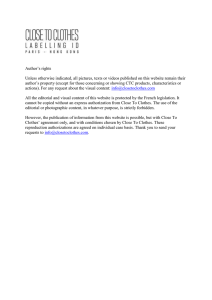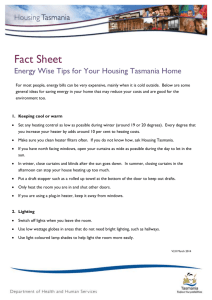Energy-efficient appliances
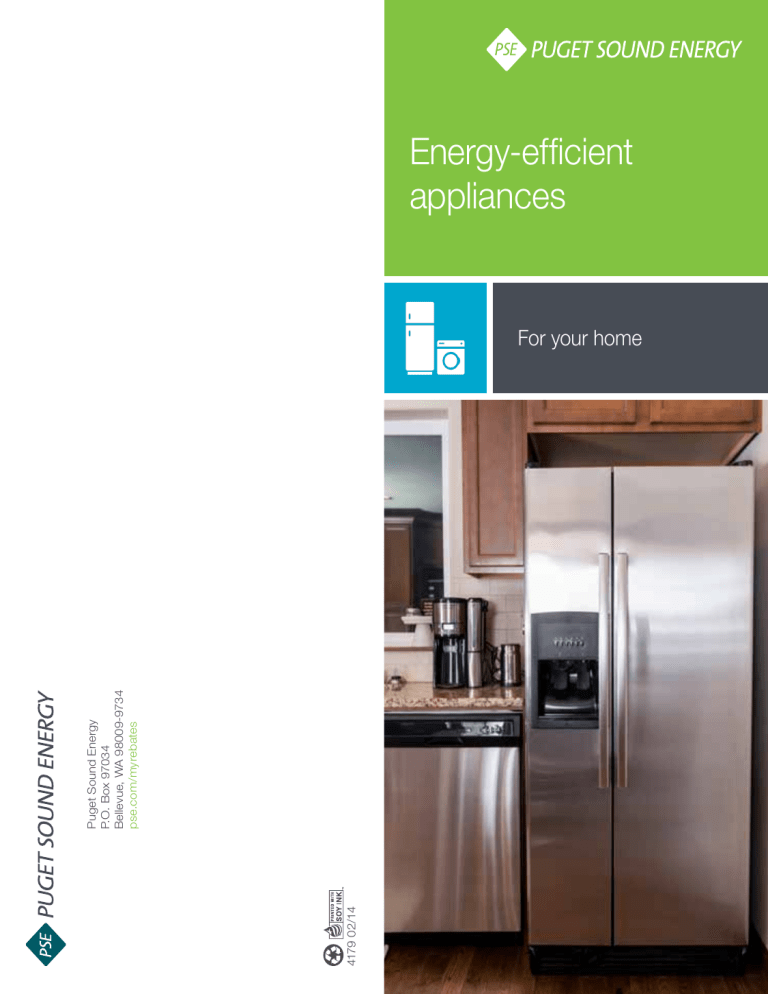
Energy-efficient appliances
For your home
In this guide
4 Be a smart buyer
4 ENERGY STAR dishwashers save time, money and energy
5 Premium-efficiency clothes washers
8 The best fridge is the one that saves food and money
9 Get the most out of your air conditioner
9 Get the most out of your refrigerator and freezer
10 Cooking with energy-saving appliances
10 Getting the most out of your stove and oven
About Puget Sound Energy
Puget Sound Energy is Washington state’s oldest local energy company. We serve 1.1 million electric customers and more than 760,000 natural gas customers in 10 counties. For more information, visit pse.com
. Also follow us on Facebook and Twitter .
2 3
Be a smart buyer
When the time comes to buy new household appliances,
PSE recommends models that have earned the ENERGY
STAR ® qualification. ENERGY STAR is a partnership between government and industry that offers consumers energy-efficient solutions, providing a trustworthy label on over 40 product categories (and thousands of models) for your home.
Qualified products should have the ENERGY STAR prominently displayed for easy comparison. Look for the yellow energy guide sticker attached to appliance models on display. The energy guide shows the Energy Factor (EF) and operating costs for the appliance, so you can easily compare the efficiency and expense of different models.
ENERGY STAR dishwashers save time, money and energy
ENERGY STAR qualified dishwashers have more efficient motors, pumps, washing systems — everything really.
Many models have features that both improve cleaning and reduce demand on the hot water tank. By replacing a dishwasher manufactured before 1994 with an ENERGY
STAR qualified dishwasher, you could save more than $25 a year in energy costs, and $100 over the lifetime of the product in hot water costs.
4
Getting the most out of your dishwasher*
• Do not pre-rinse dishes.
• Use the air-dry option.
• Use a rinse aid to help the dishes dry without spotting.
• Fix cut or chipped plastic coating on racks to prevent rusting.
• Twice a year, lift out the strainer from the bottom of your dishwasher and clean it with warm soapy water and a soft plastic scrub brush.
• Never use regular dish washing liquid intended for hand washing dishes.
• If you live in an area where the water is hard, you may need to use more detergent. If you live in an area where the water is soft and your dishes come out soapy after they are washed, you may want to use less detergent.
*Check manual for recommended care. Tips for use may vary from model to model.
Premium-efficiency clothes washers
7,000 gallons and $65 a year — those are the two big savings that come from a premium-efficiency clothes washer. And with savings comes versatility: Delicates, bulky items, dry clean, premium efficiency can wash it all and are available in top and front loading models:
Top loading
Top-loading models look like old-style models, but these premium-efficiency clothes washers use different types of washing actions to clean clothes with less water and energy. Many have sensors to monitor incoming water temperature closely. They also rinse clothes with repeated high-pressure spraying instead of soaking them in a full tub of water.
5
Front loading
Front-loading models are similar to machines used in commercial laundries. They use a horizontal or tumble-axis basket to lift and drop clothing into the water instead of rubbing clothes around a central agitator.
Both top-loading and front-loading premium-efficiency clothes washers save water and energy. They also use faster spin speeds to extract more water from clothes, reducing dryer time and energy use.
Getting the most out of your clothes washer and dryer*
• Washing with lower temperatures is a great way to lower your energy use. To maximize your energy savings, wash and rinse in cold water.
• Match the water level to the size of your load. Don’t fill the whole tub for a few items.
• You may be using up to six times as much detergent than needed. Using too much detergent will cause your machine to create excessive suds and will make the machine work harder.
• Contact your water utility to find out if you have hard or soft water. Your appliance manual will tell you how much detergent you need for your water type.
• Before you purchase a new clothes washer, check pse.com or call 1-800-562-1482 to learn about rebates from PSE for premium-efficiency clothes washers.
• If you can, use the moisture sensor option on your dryer so the machine automatically shuts off when the clothes are dry.
• Clean the lint screen after each use. Lots of lint reduces efficiency.
6
• Clothes should dry in about 40 minutes to one hour.
The more clothes you put in, the longer it will take.
• Choose a permanent-press (cool-down) cycle. No heat is supplied in the last few minutes, but drying continues as cool air is blown through the tumbling clothes.
• Keep the dryer exhaust vent clear of shrubs, cobwebs or lint, and follow the dryer exhaust vent cleaning instructions in your owner’s manual. Check to see that shutters on the dryer vent located on the outside of your home move easily.
• Avoid stop-and-start drying and dry loads back-toback. Stopping the dryer for long periods of time in between loads cools the dryer down, which then will require more energy to warm up for other loads.
• When possible, use an outdoor clothesline or an indoor drying rack. This not only saves energy, but it also reduces wear and tear on your clothing.
*Check manual for recommended care. Tips for use may vary from model to model.
7
The best fridge is the one that saves food and money
Choose ENERGY STAR qualified refrigerators and freezers
How much free space is in your fridge? Is it always full? A little empty, maybe? You should be asking yourself these questions if you’re thinking about buying a new one, which should be about every 15 years. Consider ENERGY STAR qualified refrigerators if you’re in the market. ENERGY
STAR fridges require about half as much energy as models manufactured before 1993 and are more efficient than required by current federal standards.
They also have highly efficient gizmos and gadgets that improve insulation, reduce energy consumption, and they’re quieter and generate less heat than conventional models. ENERGY STAR qualified freezers use at least
10 percent less energy than required by current federal standards, too.
If you’re shopping around, keep in mind that manual defrost refrigerators are generally more efficient than automatic defrost models.
Get the most out of your air conditioner*
Quit blowing away money. Upgrade and save
Save up to $14 per year on your electric bill by replacing your air conditioner with a new ENERGY STAR qualified unit. Improved compressors and insulation allow these air conditioners to run silently with 10 percent less energy than conventional models.
Before you buy a new air conditioner, assess your room size and match the size of the room to the appropriate
BTU-per-hour output. Room construction, climate and other factors may also affect your choice.
If you are considering central air conditioning or cooling your home with a heat pump, look for ENERGY STAR qualified products or call a PSE Energy Advisor at
1-800-562-1482 .
*Check manual for recommended care. Tips for use may vary from model to model.
Get the most out of your refrigerator and freezer
• Ditching old or rarely used fridges or freezers is one big way to lower your electric bills and conserve energy.
• Fridge temperatures should be between 34 and 40 degrees. Check your refrigerator’s coolness by putting a kitchen thermometer in a jar of water then leaving it in your refrigerator overnight. To test your freezer, just stick a thermometer in it overnight. The freezer should be between 0 and 5 degrees Fahrenheit.
• A freezer with nothing to freeze is wasteful, so keep it full. If your freezer space is underused, fill empty milk jugs or other plastic containers with water and place them in your freezer. The fuller it is, the better is retains cold, and it won’t need to work as hard.
• Yes, we recommend vacuuming your refrigerator. Well, the coils at least, which can be found underneath or on the back of the fridge. Dust build-up can cause stress to the appliance, increasing wear and tear on the motor as well as increasing your energy usage.
• Defrost your freezer if ice build-up is more than half an inch thick.
• Check the door gasket once in a while to make sure the seal isn’t damaged or blocked by debris.
• Keep at least two inches of space around the refrigerator for good air circulation.
8 9
• Check to see if your refrigerator has an energy-saving anti-sweat switch. When switched on, this switch keeps condensation from gathering near door seals, especially during hot weather. You’ll save energy by keeping the switch off during cooler parts of the year.
• Avoid running frost-free refrigerators in environments where the air temperature is below 60 degrees
Fahrenheit, unless it is specifically designed for these conditions. At lower temperatures, the air compressor may not run very well, leading to a lack of cooling in the freezer compartment.
Cooking with energy-saving appliances
Even though ENERGY STAR does not label cooking appliances, such as stoves and ovens, there are many options currently available if you’re looking to buy new appliances.
One thing to keep in mind is how often you cook for a crowd. If you entertain, look for at least one high-powered element or burner and a large oven. High-heat burners can be useful for searing, stir-frying or heating large quantities, while ranges with convection ovens will often speed roasting.
Getting the most out of your stove and oven
Stoves
• Use the burner that is closest to the size of your pan or pot.
• Speed up cooking time, and use less energy, by using lids on pots and pans.
10
• Use drip pans under conventional coil burners and keep them clean. Don’t line drip pans with aluminum foil because they will reflect too much heat and could damage the elements.
• If you have a natural gas stove, check the pilot light or burner flame.
• When natural gas burns properly, it should have a blue flame. If the flame is yellow, the ports could be clogged and may need to be cleaned or adjusted.
Ovens
• Preheat the oven for five minutes before baking.
• Check your oven temperature by using a separate oven thermometer.
• Make sure the oven door seal is tight.
• Try not to open the oven door while baking.
• Turn the oven off a few minutes before the food is ready and let the left over heat finish the job.
• Use a microwave oven if possible. Microwaves can use one-third to one-half as much energy as conventional ovens.
• Never use your oven to heat your home.
11
